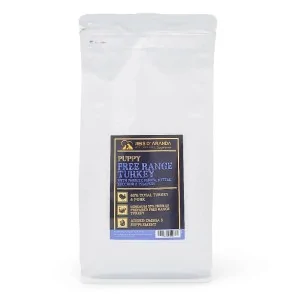Its name says it all: the Vienna blue rabbit comes from Austria. Not only is it beautiful with its shiny blue-grey...
DESIGNER CROSSBREEDS ARE NOT ‘HEALTHIER’ DOGS
INTRODUCTION
The Royal Veterinary College (RVC) has conducted the world's largest study of the health of designer crossbred dogs and has revealed that the general health of three common breeds (cockapoo, labradoodle and cavapoo) is very similar to that of their purebred parents.
WHAT IS A ‘DESIGNER MONGREL’?
Designer dogs are created by intentionally crossing established purebreds to create new breeds, such as the cockapoo (a cross between a cocker spaniel and a poodle). The UK has experienced a significant increase in demand for these designer crosses over the last decade, particularly since the pandemic, and many of them now outstrip the popularity of their parent breeds. For example, in 2023 there were more cockapoo dogs (653,597) in the UK than English Cocker Spaniels (562,951) or Poodles (105,369).
Much of this meteoric public demand has been driven by a widespread belief that designer crossbreeding is a healthier option, because it somehow avoids the ‘harmful’ health effects caused by inbreeding, which is common in purebred dogs (this just goes to show that those who applaud this type of crossbreeding have no or incorrect knowledge of selective inbreeding).
In reality, this type of crossbreeding is done in an experimental way and looking for an economic benefit, as none of these dogs have a specific functionality, having a much higher price than their purebred congeners, not having health tests or official papers (in many cases), these prices range between 4.000€ and 15.000€.
What are some of these designer mongrels?
- LABRADOODLE (Labrador Retriever x Poodle)
- GOLDENDOODLE (Golden Retriever x Poodle)
- CAVAPOO (Cavalier King Charles Spaniel x Poodle)
- MALTIPOO (Maltese x Poodle)
- SCHNOODLE (Schnauzer x Poodle)
- BERNEDOODLE (Bernese Mountain Dog x Poodle)
- AUSTRALIAN BERNEDOODLE (Australian Shepherd x Bernese x Poodle)
- COCKAPOO (English Cocker Spaniel x Poodle)
- PUGGLE (Pug x Beagle)
- CHUG (Chihuahua x Pug)
- CAVACHON (Cavalier King Charles Spaniel x Maltese Bichon)
- POMSKY (Pomeranian x Siberian Husky)
- CHIWEENIE (Chihuahua x Dachshund)
- MORKIE (Maltese Bichon x Yorkshire Terrier)
- AUSIEDOODLE (Australian Shepherd x Poodle)
- LABMARANER (Labrador Retriever x Braco de Weimar)
- YORKYPOO (Yorkshire Terrier x Poodle)
- GERMAN PEI (Shar Pei x German Shepherd)
IS A ‘DESIGNER MONGREL’ A DOG BREED?
No. For a breed of any type of animal to be considered just that (a breed) it must fulfil a wide series of requirements that the great majority of these designer crossbreeds do not fulfil, for example, certain physical (morphology, type of coat, bite, colours...) and psychological characteristics must be maintained in a stable way for a minimum of 4 generations; these four generations must be evaluated by morphology judges on the basis of a standard that must be presented beforehand for its study to be accepted, and all the specimens presented must comply with it. On the other hand, there must be a wide variety of specimens to ensure a good gene pool to avoid extreme blood closure of the breed (i.e. they must be bred by many people and all must meet the above mentioned requirements).
This type of dog is most often at fault in the coat, as they are crosses between totally different breeds, many of them have incompatible coats which produce strange mixtures, so their care, cut and treatment is quite complex.
On the other hand, there are dog breeds whose characters are very different from each other, so that in the most bizarre crosses (such as the PITSKY, which is a cross between American Pitbull Terrier and Siberian Husky) we can find absolute time bombs, especially if we cross working dogs with very strong instincts, high levels of energy or very strong personalities.
A good example of how a breed is admitted is the Biewer Terrier or the Perro de Montería de Valdueza (the latter was admitted as a Spanish breed by the RSCE in 2023, after more than 70 years of work by its enthusiasts, who were looking not for the money, but for a big, big and functional hunting dog).
A SURVEY OF 9000 OWNERS
The study, conducted by Gina Bryson, BSc in Companion Animal Behavioural Science and Welfare, Rowena Packer, Senior Lecturer in Companion Animal Welfare and Behavioural Science, and Dan O'Neill, Associate Professor of Companion Animal Epidemiology, surveyed 9,402 UK owners of three dogs. 402 UK owners of three designer cross breeds of dog and their parent breeds (cocker spaniel, Labrador retriever, cavalier King Charles spaniel and miniature, toy and standard poodles).
Health information provided by the owners was then collected and the risk of each breed having the 57 most common disorders found in dogs was compared.
The results showed that the risk of food indiscretion, vomiting and diarrhoea was higher in the three designer crosses compared to their shared parent breed, the poodle.
In addition, the three designer crosses were more likely to suffer from ear infections than their non-poodle parents. In addition, cockapoos were more likely to suffer from itchy skin than their parents, a condition often caused by allergies.
Conversely, both the labradoodle and cockapoo had a lower risk of patellar luxation (slipped kneecaps) compared to the poodles, but the cavapoo did not differ in likelihood compared to either parental breed.
‘These results show that risk did not differ at all for most disorders between the designer crosses and their parental breeds. The results also largely debunk some people's beliefs that designer crosses are somehow impaired or defective because they do not have the ‘pure’ blood of purebred dogs and therefore must be less healthy than the parental breeds,’ they explain.
HEALTH TESTS
The vast majority of ‘breeders’ of designer mongrels do not health test their dogs or the litters born under their roof (there are exceptions, of course), because they claim that they are ‘healthier’ dogs and the diseases of their original breeds will not be transmitted or occur in the aforementioned crosses.
This is a major flaw, as mandatory testing should focus (above all) on hip dysplasia, elbow dysplasia, progressive retinal atrophy (PRA), primary lens luxation (PLL) and echocardiograms to rule out heart problems.
Since designer mongrels do not have specific tests as they can carry all those encompassed in their original breeds, those five mentioned should be the basic ones. Pedigree dogs do have specific tests, lab packs that encompass several (or all) of them and are ultimately much easier to control.
CONCLUSION
As we have seen, ‘designer mongrels’ are not healthier than their purebred counterparts, so the excuses of health and ‘looking good’ are not applicable in these cases, as it is an absolute lottery. Crossbreeding to improve the health of a particular breed (e.g. LUA Dalmatians) takes a very different process, which we will look at in the corresponding article.
If we are looking for a companion for our lives it is best to opt for an established breed whose personality and function suits our way of life and whose parents have been health tested.
Leave a comment
Log in to post comments
















